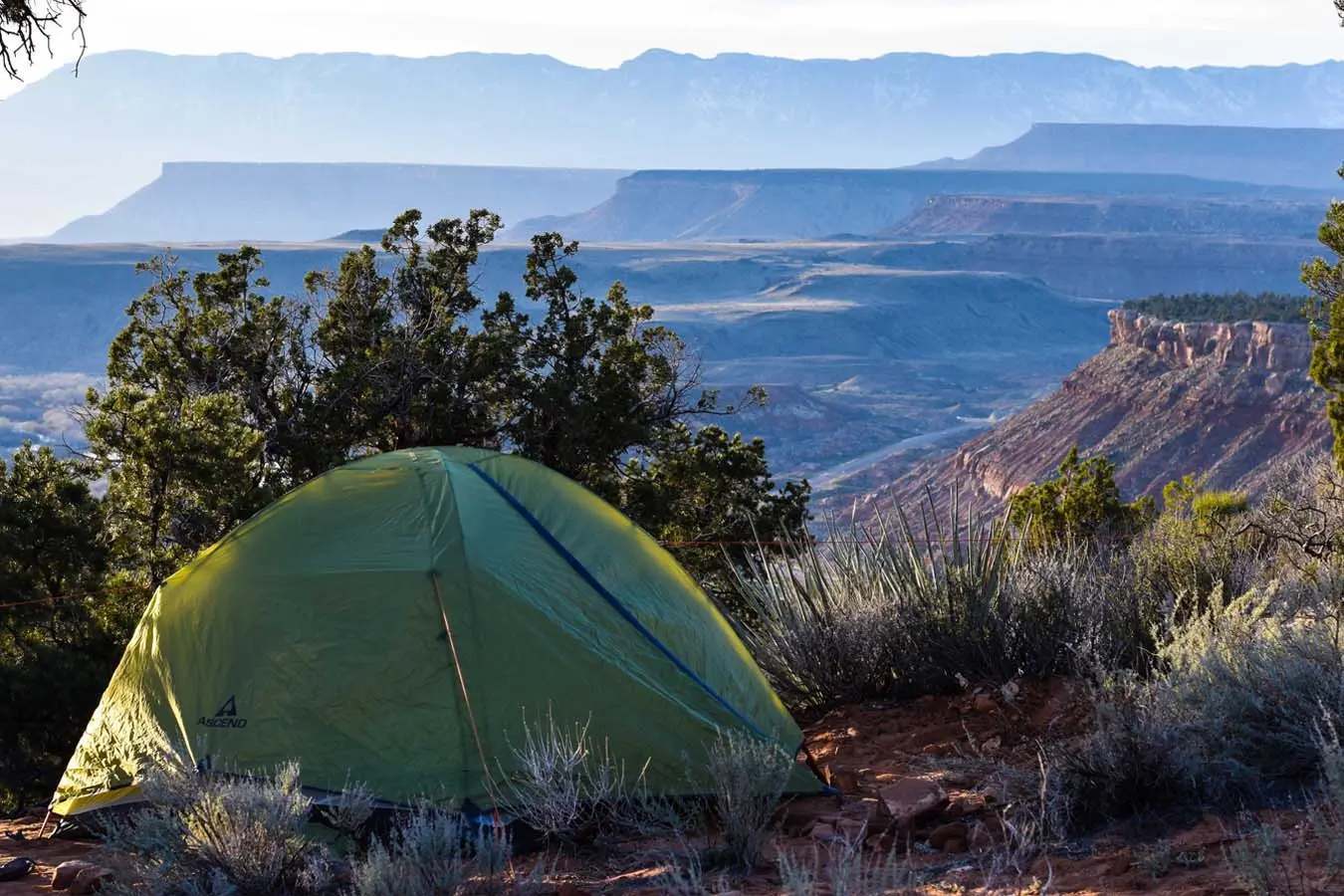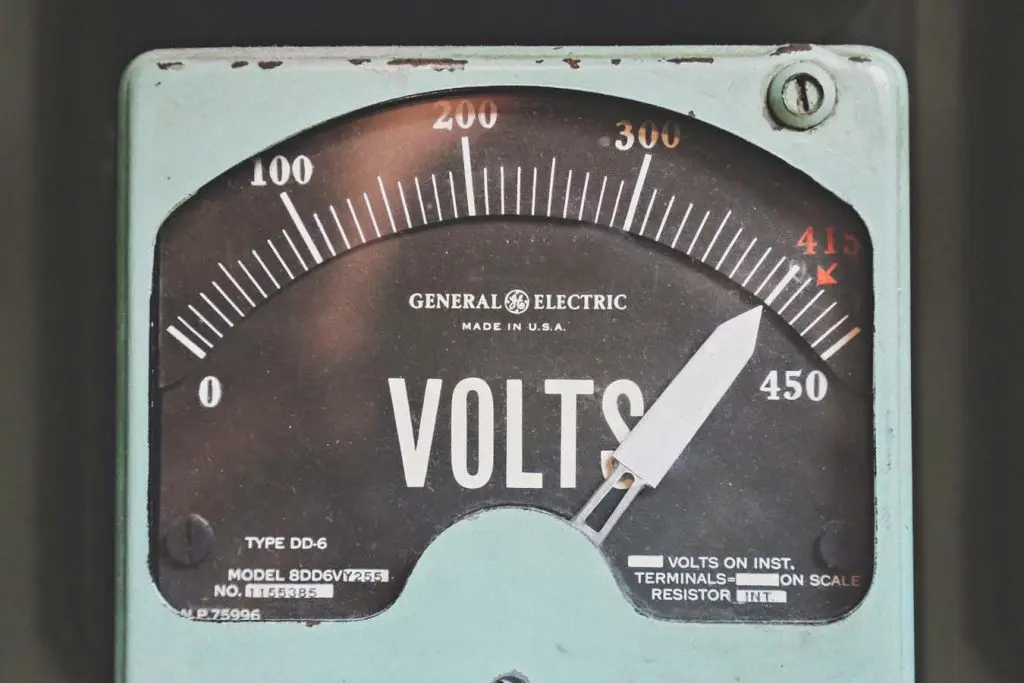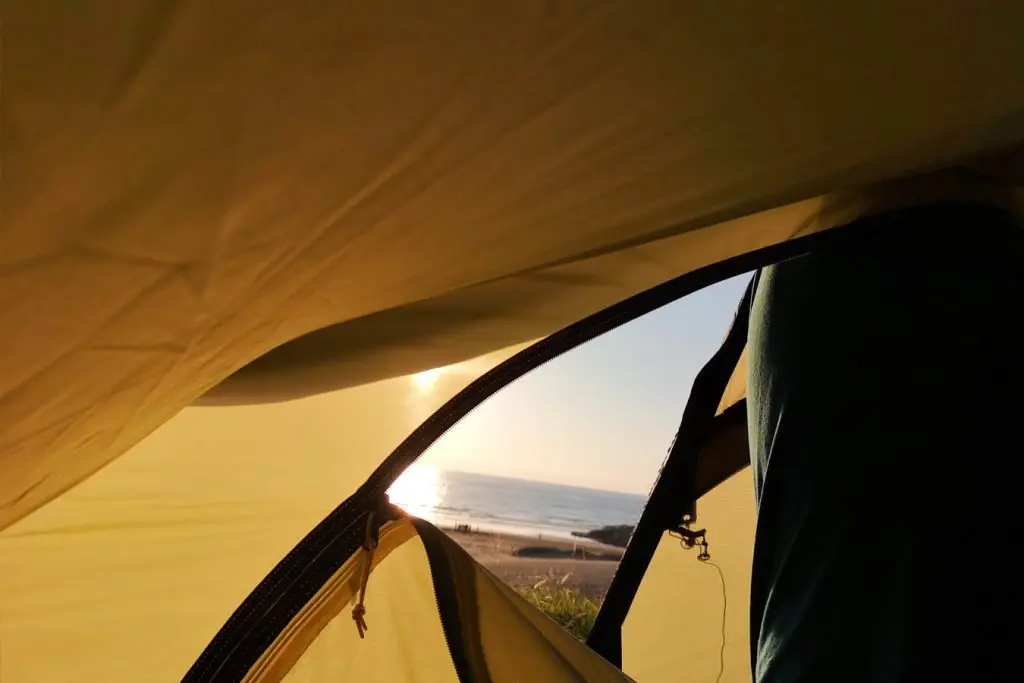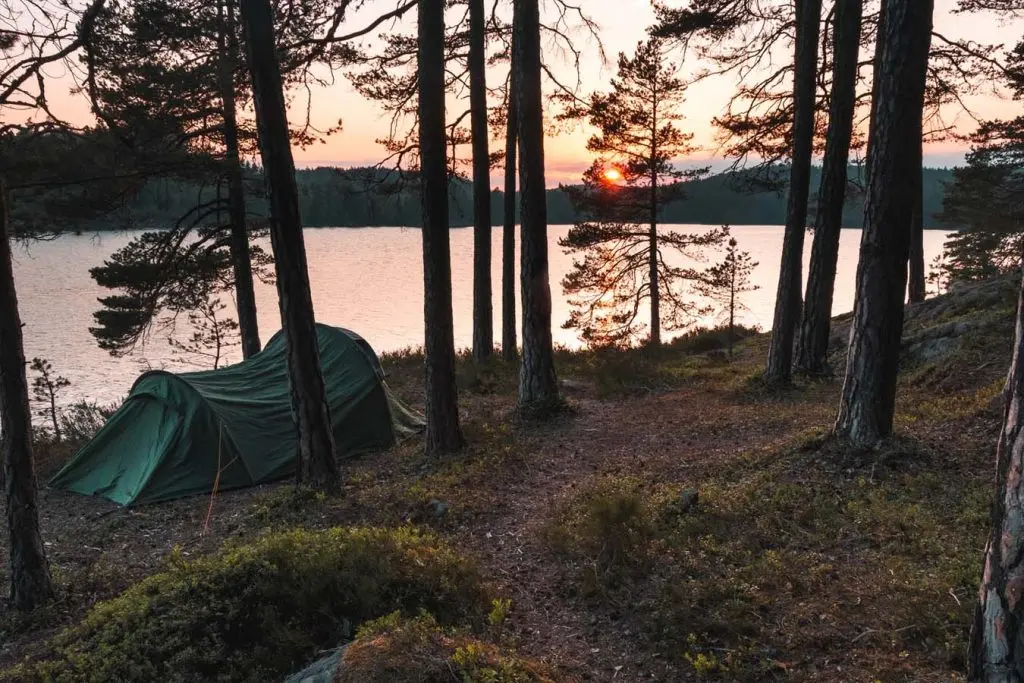For most serious campers, a little hot weather isn’t enough to deter them from going outdoors, and whether you’re a seasoned enthusiast or it’s your first trip into the wilderness, staying cool when camping in the summer is vital to remaining comfortable.
Starting with ‘preparation’, here we provide a guide and checklist to making sure your hot weather camping trip is as successful as possible…
Preparation
Campsite location
There is nothing worse than trying to sleep in a hot tent, let alone being in one during the day, and the location of your campsite plays an initial key role in this.
Avoiding open spaces and finding a shaded (even just partial) area, greatly helps reduce the amount of time your tent and pitch will be subjected to direct sun exposure. Sites in tree populated and/or wooded areas are therefore one of the most favorable summer locations to camp in.
However be sure to pay attention to the times of day your pitch will be shaded. Preferably it wants to be out the sun during the hottest part of the day, which is midday.
Secondly and if possible, camping at higher altitudes where the air is naturally cooler due to the smaller amount of air pressure, also makes for a much cooler environment.
Choosing the right pitch
Pitch choice is equally important, and aside from shaded spots, pitching close to a river or a large body of water will help to provide a cooler and fresher environment, via its natural movement of the water and cross breeze coming off of it.
Additionally, strategically orientating the main entrance and/or the openings to your tent to face the prevailing breeze, will help to draw fresh air in, and push the old and hot air out.
Best time to pitch
It hopefully goes without saying, that when pitching your tent you should avoid the midday sun, and therefore aim to pitch in the early morning or late evening.
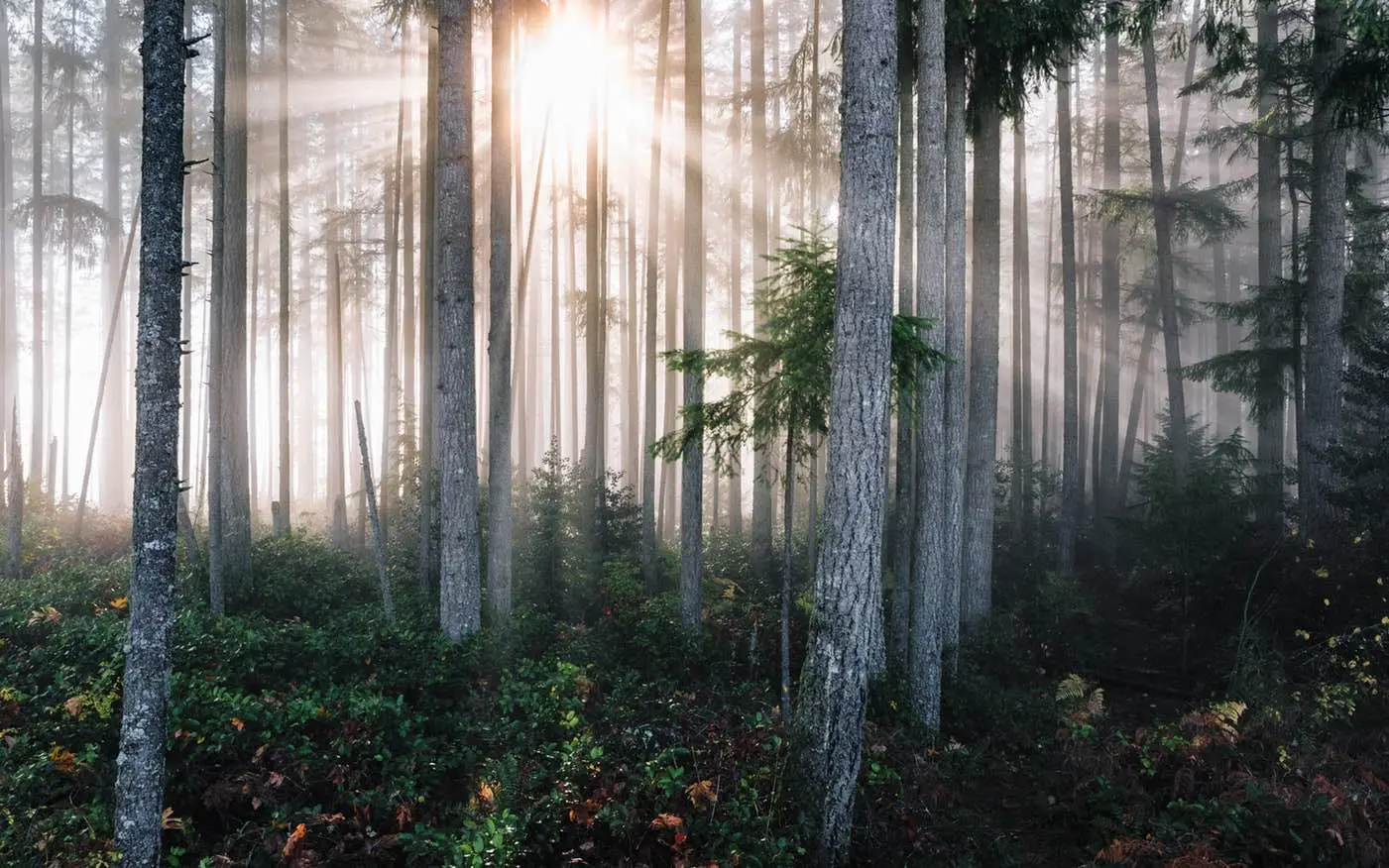
Hot weather camping equipment
Having the right equipment on any camping trip is crucial to its success and ultimately your comfort, and although you won’t need think jumpers and sleeping bags, there are still key items that need to be considered.
Summer camping tents
As we explain here tents with plenty of open-weave mesh panels and vents contribute to keeping the interior cooler and the air well circulated. Tent materials also play a large role in this, where natural fibers such as polycottons and canvas’s are recommended over heavy synthetics, due to their breathable qualities.
When Type of tent – When it comes to the type of tent, you want one that is easy and fast to pitch and therefore requires as little physical exertion as possible. Many tents require more than one person to erect them and the more hands you have available, the quicker and easier it will be. A lightweight tent won’t be as challenging , so particularly when hiking with your equipment, you should opt for something with light materials. Heavy metal poles are tough enough to move around, let alone while it’s hot and muggy.
Tent protection – A quality roof liner or protector offers a silver-coated layer to reflect the sun’s rays. This coating deflects dangerous UV rays, while also shading the tent and keeping the inside colder.
General
Gel-Fiber pillow – When you sleep, your body heat can build up and become trapped in the fabrics around you, however a gel fiber pillow naturally increases air circulation, and therefore helps to prevent overheating and sweating during the night.
A broad-brimmed hat – Wearing a brimmed hat is essential while you’re under the sun. The extra shade protects your face from damaging UV rays whilst shielding your eyes.
Light-colored clothing – Its important to wear lighter hues during warm weather. Darker colors trap and absorb the heat; making it harder to cool down, whereas bright shades tend to reflect it and help to keep your body temperature lower overall.
Battery-powered fan – These fans are in-expensive and are an extremely useful tool for cooling off. You can’t enjoy the luxury of air conditioning while you camp, so a fan is the next best thing.
Hammock – A hammock makes for a beautiful place to relax and cool off when your tent is too stuffy inside. It’s strung in the open, so you get a gentle cooling breeze, so long as you choose a shady spot.
Sunscreen – Sunscreen is essential, especially if you plan on being outdoors in the hot summer sunshine. It protects your skin from dangerous UV rays, so you don’t end up with a sunburn.
Bug repellent – This one goes without saying. The last thing you want is to get eaten alive by insects while you camp. There are different kinds to choose from, including sprays, lotions, even essential oils. If however you don’t like applying the repellent directly onto your body, there are options available for clothing too.
Solar-powered energy – When camping you rarely have the luxury of plugging your electronics into an outlet. Solar power however provides a free and easy power source for lighting, fans, charging, and even air conditioning.
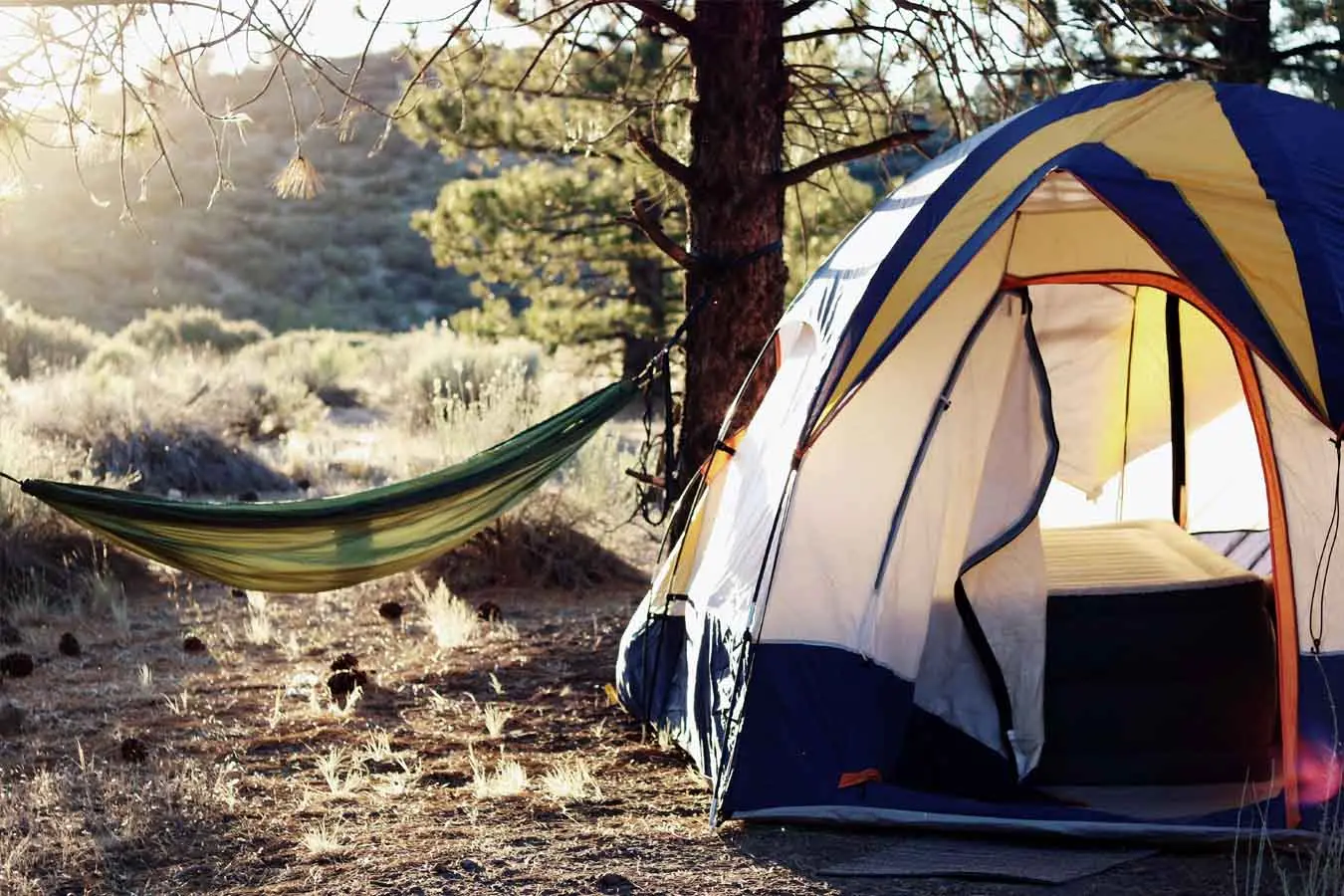
Living
When the basic amenities of ‘normal’ life are no longer at your disposal, daily life is anything but familiar when camping!
Camping in hot weather requires extra forethought, aim to:
- Use the curtains in your tent to keep out direct sunlight.
- Stay extra hydrated by drinking clear liquids.
- Keep a wet flannel on hand to wipe your face and neck.
- During the afternoon, try laying in the shade on your hammock.
How to keep your tent cool with electricity
Whether it be via a mains connection, generator, or from solar power, if you have the luxury of a power source, you’ll be able to run multiple and more powerful fans than with battery power, and even can even invest in a portable air conditioning unit.
How to keep your tent cool without electricity
Keeping a tent cool without power is an entirely different ball-game, and some helpful tips for staying cool while camping without electricity are:
- Opening your tent during the day to allow for better airflow.
- Choose a tent with vents.
- Pitch your tent in a shaded spot.
- Take down your tent during the day
Hot weather eating
Its important to consider how and what you will be eating and:
- Stop foods from spoiling quickly by storing them in a dry and cool space.
- Plan your meals, and avoid keeping fresh produce for more than a couple of days
- Eat cold foods during the day to help keep your body temperature down
- Ensure that your cooler has enough ice blocks.
- Keep bottled drinks in an ice bucket and/or in the shade
Luxury campers with access to electricity could opt for a small camping fridge, which makes food storage less of an issue.
Campfire
One of the responsibilities of camping during the summer is campfire security, and when lighting always take extra caution, as the ground is likely to be excessively dry, and heat can travel and be transferred through the ground as well as over it. Where possible use a portable fire pit or a stone platform, to contain the fire as much as possible.
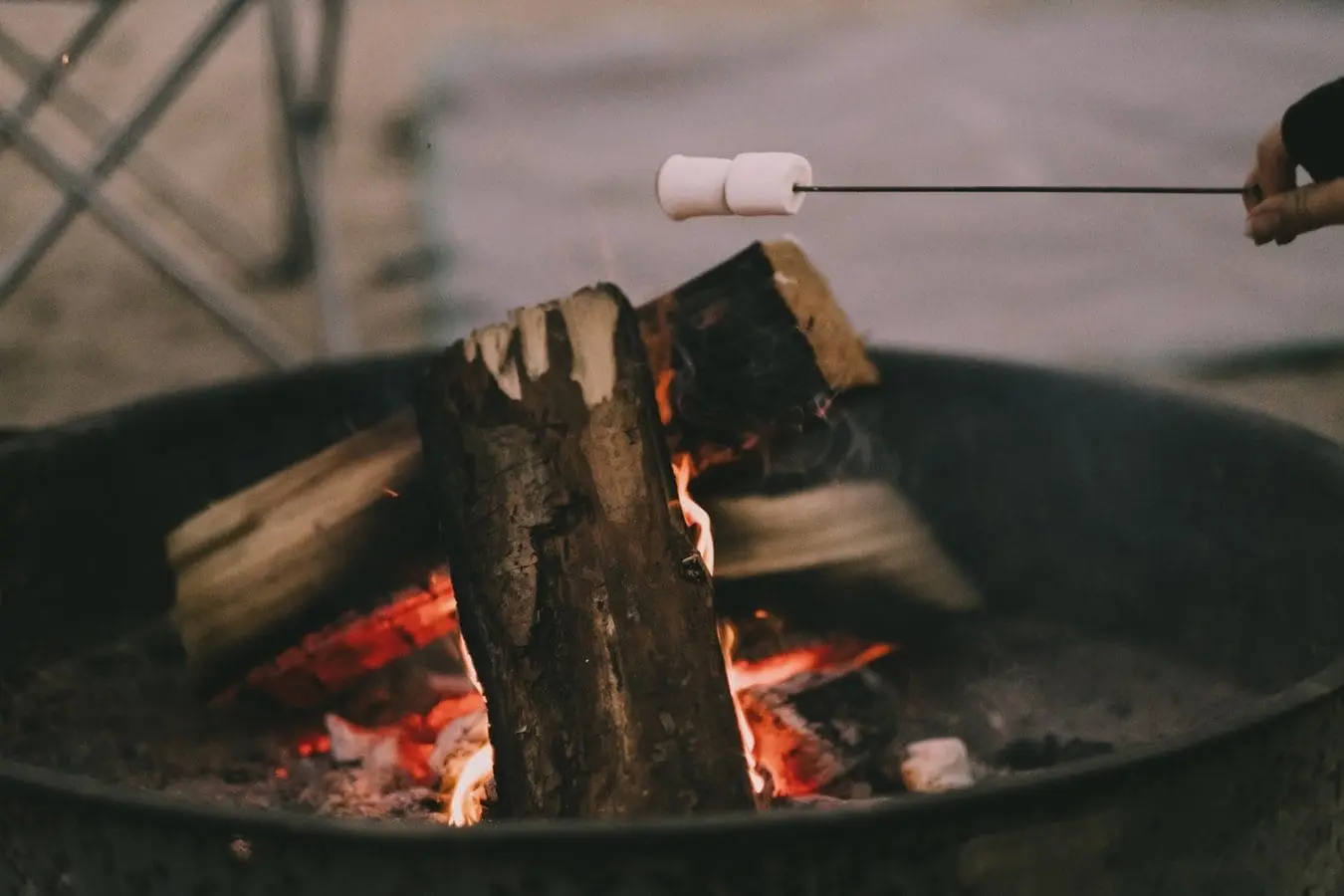
Sleeping – How do you sleep in a hot tent?
Sleeping in a hot tent is never easy, but there certain steps that can be taken to make it as enjoyable as possible:
- Attach a battery-operated fan to ceiling of your sleeping area
- Fill a cooler with ice and place it in your sleeping area with the lid open
- Open all the vents in your tent
- Sleep outside in a hammock (with a fly screen!)
- Ensure there is plenty of space between you, other campers and your equipment
Summer camping sleeping bags
A summer sleeping bag is less about warmth and more about comfort, and therefore you should pay special attention to the:
- Temperature rating: You want very little insulation.
- Shape: It wants to be loose with plenty of breathable space.
- Length: Be sure to choose a sleeping bag that is long enough for your body.
A sleeping bags temperature rating goes by season, and the best products for hot weather are obviously the ones designed for summer. However take the elevation of your campsite into consideration because the higher up you are, the colder it gets, especially at night.
Remember, your body heat builds up inside a sleeping bag, and if you feel too hot, unzipping the sides will allow for ventilation and airflow inside, and your temperature to lower.
Activities
Planning your activities ahead of time is a good practice. Doing so ensures that you make smart choices and won’t end up overheating or suffering from heatstroke.
The sun is at its hottest during midday, and so high intensity activities should be planned either side of this.
When in the midday sun, try things like swimming or other water games. Anything in or around water will keep your temperature down and prevent overheating.
Afternoons are a great time to relax in your hammock and take in the scenery. Relaxing in a cross breeze is a safe and enjoyable way to pass the hottest part of the day.
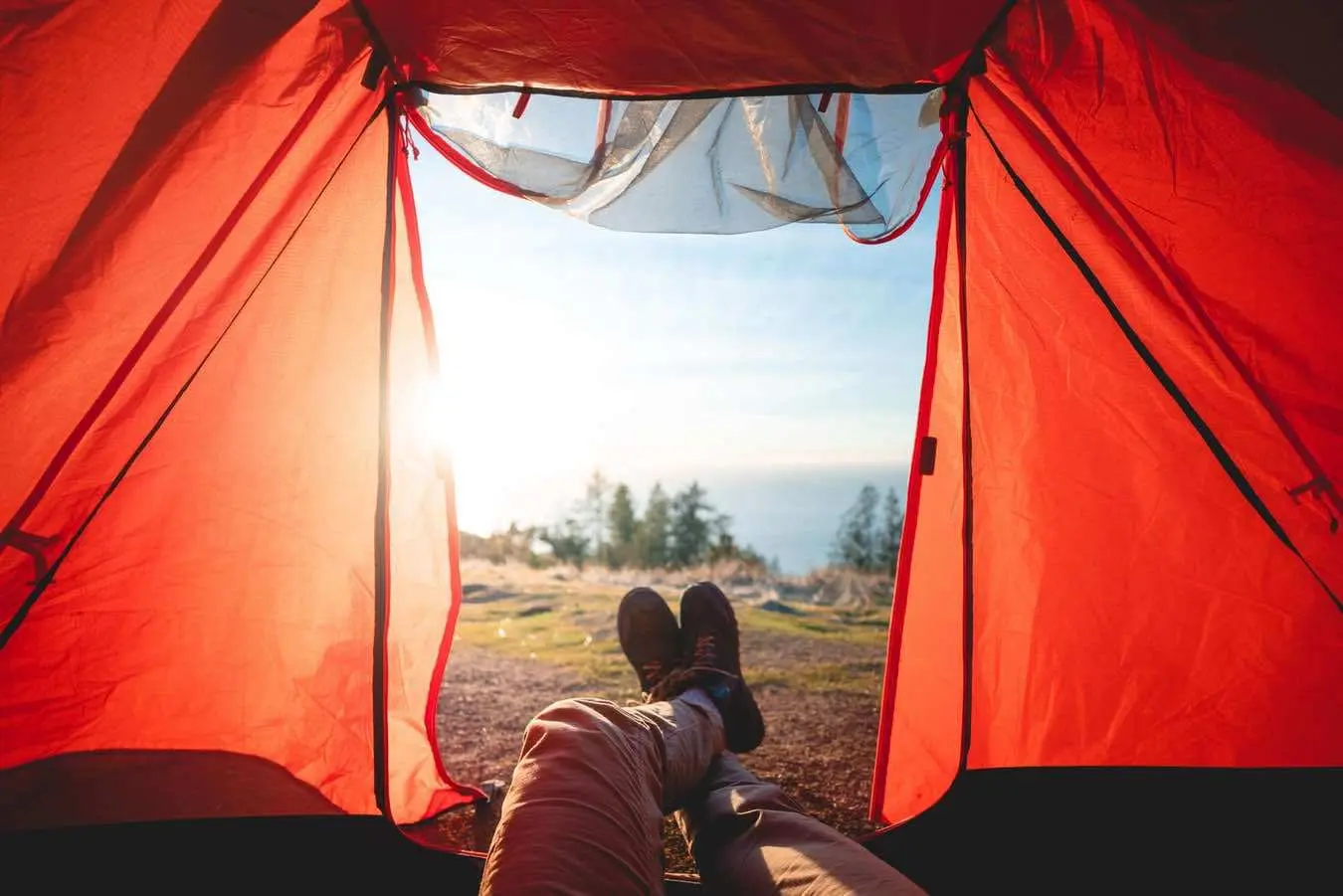
How hot is too hot for camping?
No matter how much you enjoy camping, sometimes the weather is too hot to allow for a safe trip. Once temperatures soar to certain levels, humidity considerably rises and could affect your health.
Pay attention to the heat index, which tells you what activities are safe without risking heat-related illness.
Any temperatures 90°F (30°C) and above have a high risk for emergencies and illness. If you see a heat index nearing that range, it’s smart to postpone your trip until the weather cools down a few degrees, at least.
Remember that prolonged exposure to direct sunlight influences the temperature range. After 15-minutes in direct sunlight, your body temperature soars to 15-degrees higher than the heat index at the time.
Why do tents get hot?
Besides the obvious, there are several reasons a tent gets hot. Positioning it in the wrong location is the most common mistake. You want to ensure that you pitch your tent in a shady spot. Otherwise, the direct sunlight will raise the temperature inside.
If your tent has poor ventilation, it will be too hot to bear, which is why you should look for an option with pre-made vents. Always turn the door away from the sun because this allows for more cooling air to enter.
The color of your tent also influences the temperature inside. Darker shades trap heat inside, but lighter ones reflect the sunlight.

